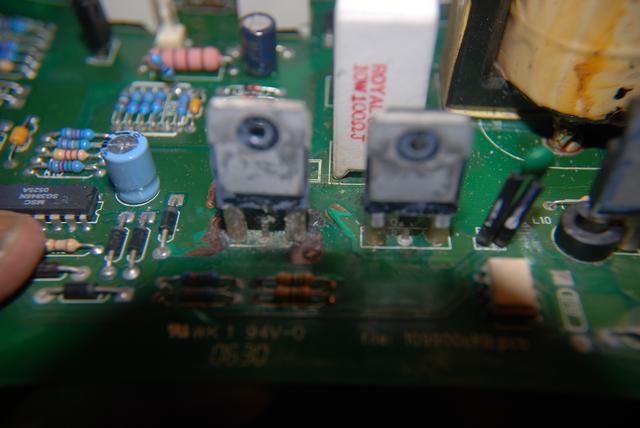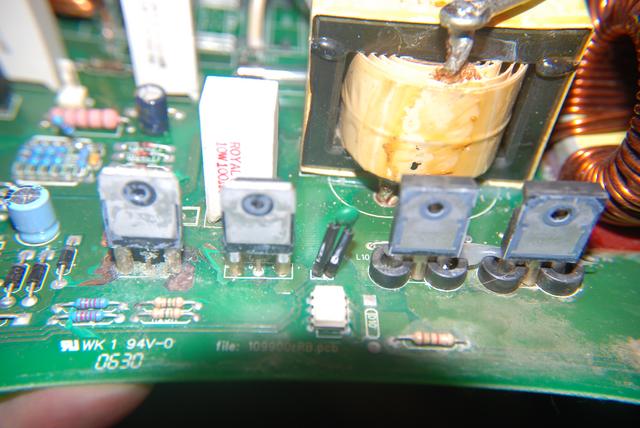Forum Discussion
wnjj
May 17, 2018Explorer II
Andonso wrote:When I look at the picture of the back of the board from the other thread, I can see the traces. The gate is on one end and the source on the other and lines up with that one in your post. Is that “corrosion” a sign of overheating?
I removed the heat sink and it appears the mosfet on the far left is sort of crusty, appears from some sort of corrosion? and part of the PCB paint has flaked off, the mosfet next it doesn't appear to be as bad.
The mosfet markings have been smeared with some sort of pen so I'm not able to find a part number.
the documentation does have some specifications and also much detail on how the mosfets work with other parts of the converter.
Q2a & Q2b - 24 A, 500 V, 20 on resistance
I did find a diode mode for my dmms. with the ->| symbol. I attempted some testing moving the dmm probes around. The bottom of the mosfets have plastic tubing. When I tested them from the opposite side of the board I got mixed results. Holding the pos+ and neg- probes on the source and and drain there is momentary low voltage with sometimes a beeping then the meter goes to zero, while the mosfet on the right maintains a low reading such as .8xx .9xx. Sometimes the mosfet on the left reads only zero when probing the two outer left and right pins.
I don't know for certain if the gate is in the middle, drain on the left and source on the right? viewing the mosfet as from the pics from the back side. As don't have a part number for the mosfets.
Tomorrow I'll get some electronics cleaner and clean them up. I may need to remove the plastic tubing near where their soldered to the pcb.
Q2b is on the left and Q2a on the right.
Pics
I’m leaning more toward a failed FET, likely finished off by the high current demand of the high workload with the dry batteries. It makes sense that an 80A model gives these FETs the most workout. Mex can probably offer a replacement suggestion.
Google for how to test a FET, best done outside of the circuit. There should be high (near infinite) resistance between the source and drain until you charge up the gate with the meter. There should never be low resistance between the gate and either other terminal, other than during the brief gate charge up time. Differences between the two is already indicating something. They’re wired the same in the circuit.
I think you’re close!
Switching power supplies work by using transistors to switch DC voltage on and off feeding a pseudo AC voltage into a transformer. The output coil is then rectified back into DC. By changing the rate of switching you change the effective output voltage. The IC that controls the gates of these FETs monitors the desired output voltage and constantly adjusts the switching rate.
About Technical Issues
Having RV issues? Connect with others who have been in your shoes.24,333 PostsLatest Activity: Nov 07, 2025



